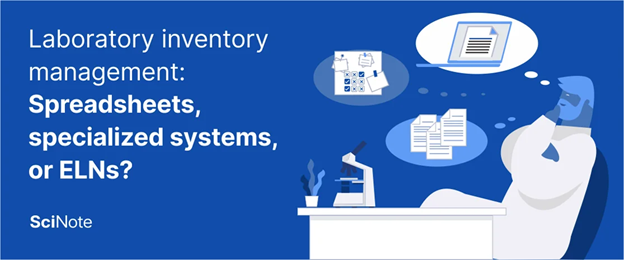In the ever-evolving landscape of laboratory management, Electronic Lab Notebooks (ELNs) have become indispensable tools for researchers and scientists. These digital counterparts to traditional paper notebooks streamline data management, enhance collaboration, and improve overall efficiency. However, selecting the right ELN software for your lab is a decision that requires careful consideration. This article aims to guide you through the crucial factors to ponder when integrating ELN software into your laboratory workflow.
Understanding the Basics of ELN Software
Before delving into the decision-making process, it’s essential to have a solid understanding of what ELN software entails. Electronic Lab Notebooks are digital platforms designed to replace traditional paper notebooks used in laboratories. They offer a centralized, secure, and easily accessible environment for recording and managing experimental data, protocols, and observations.
ELN software goes beyond mere digitization; it provides features such as collaboration tools, version control, and data analysis capabilities. When effectively integrated, ELNs can enhance data integrity, facilitate compliance with regulatory standards, and boost overall research productivity.
Assessing Lab Requirements
Every laboratory is unique, with distinct workflows, research goals, and data management needs. Many often venture to the path of LIMS vs ELN. Here we are going to talk mainly about ELN. Therefore, the first step in choosing the right ELN software is to assess your lab’s specific requirements. Consider the following key factors:
1. Research Workflow
Understanding your lab’s research workflow is paramount. Identify the stages of experimentation, data collection, and analysis. ELN software should seamlessly integrate into these processes without causing disruption. Look for platforms that offer customizable templates to accommodate your lab’s specific protocols.
2. Collaboration Needs
Assess the level of collaboration required within your lab and beyond. ELN software should facilitate real-time collaboration among team members, allowing for shared access to data, comments, and annotations. Look for platforms with user-friendly collaboration features, ensuring seamless teamwork and knowledge sharing.
3. Regulatory Compliance
Different laboratories operate under various regulatory frameworks, such as Good Laboratory Practices (GLP) or Good Manufacturing Practices (GMP). Ensure that the selected ELN software complies with the relevant regulatory standards to maintain data integrity and meet audit requirements.
4. Integration with Existing Systems
Consider the compatibility of ELN software with other tools and systems used in your lab. Integration with laboratory information management systems (LIMS), analytical instruments, and data analysis tools is crucial for a cohesive and efficient workflow. Opt for ELN solutions that offer seamless integration options.
Budgetary Considerations
Once you have a clear understanding of your lab’s requirements, it’s time to evaluate the financial aspects of implementing ELN software. While cost should not be the sole determinant, it is a critical factor in the decision-making process.

1. Total Cost of Ownership (TCO)
Consider the total cost of ownership, encompassing not only the upfront license fees but also ongoing expenses such as maintenance, support, and potential future upgrades. Understanding the TCO ensures that you make an informed decision that aligns with your lab’s budget constraints.
2. Scalability
Evaluate the scalability of the ELN software. As your lab grows and evolves, the software should be capable of accommodating increased data volume, users, and functionalities without a significant increase in costs. Choose a solution that can scale with your lab’s expanding needs.
3. Return on Investment (ROI)
Assess the potential return on investment offered by the ELN software. Consider the time saved, increased productivity, and improved data accuracy. A cost-effective solution should provide tangible benefits that outweigh the initial investment over time.
User-Friendly Interface and Training Requirements
The success of ELN implementation heavily relies on user adoption. A user-friendly interface and minimal training requirements are crucial for a smooth transition from traditional paper notebooks to digital platforms.
1. Ease of Use
Choose SciNote ELN software with an intuitive and user-friendly interface. A complex system may lead to resistance from lab members, hindering the adoption process. Conduct usability tests or request demonstrations to ensure that the software aligns with the technical proficiency of your lab staff.
2. Training and Support
Evaluate the training and support options provided by the ELN vendor. Comprehensive training programs and readily available support resources can mitigate potential challenges during the implementation phase. Consider the availability of user guides, tutorials, and responsive customer support.
Security and Data Management
The nature of scientific research demands stringent security measures to safeguard sensitive data. When selecting ELN software, prioritize platforms that adhere to robust security protocols and offer advanced data management capabilities.
1. Data Encryption and Access Controls
Ensure that the ELN software employs robust encryption methods to protect data during storage and transmission. Access controls should allow administrators to define user roles and permissions, ensuring that sensitive information is accessible only to authorized personnel.
2. Data Backup and Recovery
Evaluate the data backup and recovery mechanisms of the ELN software. Regular automated backups and a well-defined recovery process are essential to prevent data loss in the event of system failures or unexpected incidents.

3. Compliance with Data Privacy Regulations
Consider the ELN software’s compliance with data privacy regulations, such as the General Data Protection Regulation (GDPR) or the Health Insurance Portability and Accountability Act (HIPAA). Adherence to these standards is crucial for protecting the privacy and confidentiality of research data.
Vendor Reputation and Support
The reputation of the ELN software vendor is a key determinant of the software’s reliability and the level of support you can expect. Thoroughly research potential vendors and consider the following aspects:
1. Vendor Track Record
Look for ELN vendors with a proven track record in the scientific and research community. Assess customer reviews, testimonials, and case studies to gain insights into the vendor’s reputation and the success of their implementations.
2. Customer Support and Updates
Prioritize vendors that offer responsive customer support and regular software updates. A vendor that actively addresses user concerns and continuously enhances their software indicates a commitment to user satisfaction and ongoing improvement.
3. Long-Term Viability
Consider the long-term viability of the ELN vendor. Ensure that they have a stable financial standing and a roadmap for future developments. Choosing a vendor with a long-term commitment to the scientific community reduces the risk of software discontinuation or lack of support.
Trial Period and Customization Options
Before making a final decision, take advantage of trial periods offered by ELN vendors. This allows your lab to assess the software’s compatibility with your specific needs and workflows. Additionally, consider the customization options available:
1. Trial Period
Opt for ELN software that offers a comprehensive trial period. This hands-on experience allows your lab members to explore the features, assess usability, and identify any potential limitations before committing to a long-term contract.
2. Customization Capabilities
Evaluate the customization options provided by the ELN software. A platform that allows you to tailor templates, workflows, and data entry fields to match your lab’s requirements ensures a seamless integration and enhances user satisfaction.
Conclusion
In conclusion, the integration of ELN software is a transformative step for laboratories seeking to enhance data management, collaboration, and overall research productivity. By choosing wisely and considering the factors outlined in this article, your lab can embark on a seamless digital journey, reaping the benefits of modern technology while preserving the integrity and rigor of scientific research.





Be First to Comment